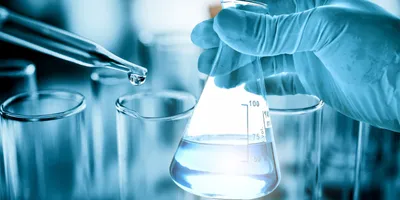Water is an important and irreplaceable reagent for researchers working in many scientific disciplines. In fact, the average laboratory uses around 35 million liters of water every year for research, analysis, and processing purposes.
Your lab likely sources water from a mains supply, but contaminants and impurities can compromise the integrity of your results. Insufficiently pure water can adversely affect samples and reagents, and even damage equipment. Such interference in your lab work can distract you from your primary objective— scientific discovery.
Therefore, selecting the appropriate water purification system is a critical decision for any laboratory. This guide aims to highlight the key considerations in choosing a system that aligns with your lab's specific needs.
What water purity do you require?
Laboratory water is categorized into three primary types, each serving distinct applications:
● Type I (Ultrapure water): Essential for highly sensitive procedures like high-performance liquid chromatography, inductively coupled plasma mass spectrometry, and molecular and microbiological applications. This water has the highest purity, with minimal levels of organic and inorganic contaminants.
● Type II (Pure water): Suitable for general laboratory applications, including preparing media, pH solutions, and buffers. It has lower purity than Type I but is adequate for many routine tasks.
● Type III (Primary grade water): Typically used for non-critical applications like glassware rinsing, water baths, autoclave and disinfector feeds, environmental chambers, or feed water for Type I systems.
Understanding the specific requirements of your laboratory processes will guide you in selecting the appropriate water type, which will then inform your choice of water purification systems. Assess the demands of your laboratory for different types of water, so that you can choose a system that will ensure you save time and space in the lab. Some systems provide a supply of Type 1 water only, whereas others can complete the full purification process to the required water specification.
Assessing laboratory water demand: How much water do I require, and how many users or applications require purified water?
Evaluating your laboratory's daily water consumption is crucial. Consider both the total volume required and the peak usage times. For instance, a lab may have low overall consumption but experience high demand during specific periods. In such cases, systems with rapid purification rates or adequate storage capacities are beneficial.
It's also important to consider future scalability. Laboratories anticipating growth or diversification of applications should opt for systems that can adapt to increased or varied water demands.
Evaluating feedwater quality: What is the quality of my feedwater?
The quality of the incoming water supply, or feedwater, significantly impacts the performance and longevity of purification systems. Factors such as hardness, presence of organics, and microbial content can affect system efficiency. Conducting a thorough analysis of your feedwater helps determine the necessary pre-treatment steps, such as filtration or softening, to ensure optimal system performance.
Space and installation considerations: How much space can I spare for my water purification system?
Laboratory space is often in short supply. Therefore, the physical footprint of a water purification system is a vital consideration. Systems are available in various configurations, including benchtop, wall-mounted, and under-bench models. Selecting a system that fits seamlessly into your laboratory layout without disrupting workflow is essential.
Consider the available space on or under the bench or on the wall to accommodate your water purification system. Do you require a larger system with an external reservoir for high volumes of water that you can situate under the bench with remote dispensers on the bench? Or do you require a compact, low-volume system with a built-in wrap-around reservoir?
Maintenance and operational costs
Beyond the initial purchase price, consider the total cost of ownership, which includes consumables, maintenance, and energy consumption. Regular replacement of cartridges, filters, and UV lamps is necessary to maintain water quality. Opt for systems that have reasonable maintenance procedures and have readily available consumables to minimise downtime. Considering this against your budget and time constraints will help you save valuable resources in the long run.
Monitoring and compliance
For laboratories operating under stringent regulatory standards, real-time monitoring of water quality parameters like resistivity, total organic carbon, and microbial content is indispensable. Advanced systems provide digital interfaces and connectivity options for seamless data logging and compliance reporting.
Conclusion
Selecting the right water purification system is a decision that impacts the reliability and accuracy of laboratory results. By thoroughly assessing your lab’s specific needs—guided by the factors outlined in this article—you can make a well-informed decision that supports optimal performance, efficiency, and compliance with quality standards.
For a more detailed exploration of water purification systems and to assist in your selection process, refer to comprehensive resources available through reputable laboratory equipment providers and industry publications.











